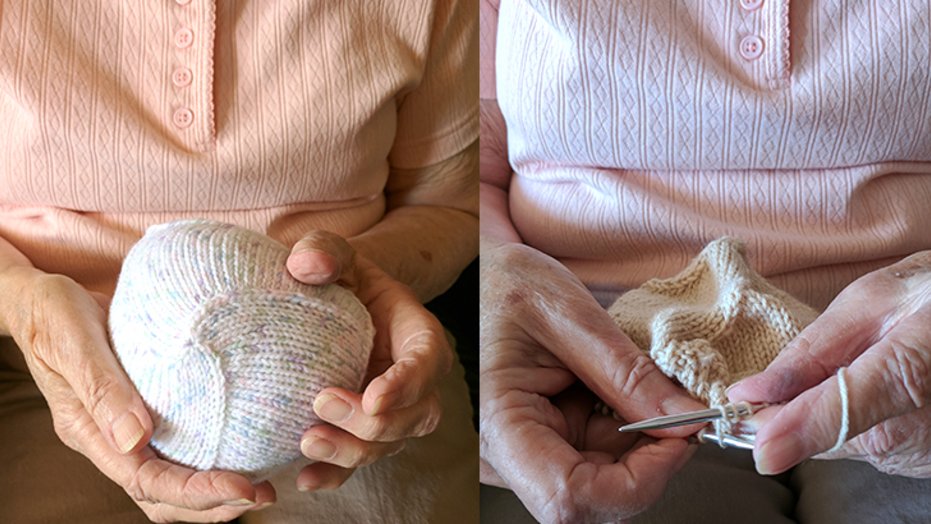
San Diego’s first comprehensive neuroscience hospital opens
Sharp Grossmont Hospital for Neuroscience brings cutting-edge technology and advanced brain and spine care close to home for San Diegans.
Pat Anderson’s love of knitting began as a child, when her mother and grandmother taught her to make bed socks for wounded World War II soldiers. Eight decades later — following a long career as a professional textile artisan and teacher, Pat is back to using her talents to help breast cancer survivors.
Pat is the founder of The Busters Project, a breast cancer survivor’s movement that provides handknit bust forms (prostheses) to women who have undergone a mastectomy. Called Busters, the prostheses are soft, lightweight and washable, mimicking the shape and feel of a real breast. Because Busters are so soft and comfortable, they can be worn inside a regular bra soon after surgery.
“I’m 91 years old, and it’s really gratifying to know that I still have something to offer that improves the quality of someone else’s life,” says Pat.

In search of a better solution
Pat underwent a bilateral mastectomy in 2006 after being diagnosed with breast cancer. At the time, there were limited types of breast prostheses. So, Pat searched for a simpler and more comfortable solution.
In 2015, Pat’s daughter introduced her to handknit bust forms. Pat’s daughter knew Pat was searching for a project following her retirement from her textile business, SpinShuttle Studio. Drawing upon her professional training and personal experience as a breast cancer survivor, Pat designed the Busters to meet the specific needs of mastectomy patients.
Breast cancer patient navigators — nurses who help patients during their treatment and recovery at Sharp Memorial Hospital — learned about Busters and introduced them to patients.
“I usually let patients know about the Busters when I see them the day after their surgery,” says Sue Robinson, oncology patient navigator at the Laurel Amtower Cancer Institute within the James S. Brown Pavilion.
Robinson says when she shows a sample Buster, patients are surprised at how soft it feels.
“It often makes them smile,” Robinson says. “Patients are always touched that someone is kind enough to donate the time and skills to make them.”
All about the Busters
It takes about eight hours to create a pair of Busters. Women can customize the size and shape by adjusting the amount of poly-fill stuffing, which makes them a great solution for women who have lost only one breast or are undergoing reconstruction.
The Busters Project has evolved into a nationwide breast cancer survivor’s movement with over 3,000 members — all of whom have received Busters.
No longer a one-person project, Anderson has recruited a team of dedicated women — each one a breast cancer survivor — to assist with the knitting. All the knitters are vetted and trained to artisan standards. Additionally, each pair of Busters is carefully vetted before being sent to a recipient.
“I’m going to knit as many Busters as I can — for as long as I possibly can,” says Pat. “The emotional scars from breast cancer can take a long time to heal, and my goal with Busters is to help restore a sense of feminine dignity and normality to speed the healing.”
To request a pair of Busters, including reorders, email Pat Anderson at spinshuttlestudio@gmail.com. You can also learn more about breast cancer; get the latest health and wellness news, trends and patient stories from Sharp Health News; and subscribe to our weekly newsletter by clicking the "Sign up" link below.
For the news media: To speak with Pat Anderson about Busters breast prostheses for an upcoming story, contact Erica Carlson, senior public relations specialist at erica.carlson@sharp.com.

The Sharp Health News Team are content authors who write and produce stories about Sharp HealthCare and its hospitals, clinics, medical groups and health plan.

Pat Anderson is a volunteer at Sharp Memorial Hospital.

Sue Robinson is a breast cancer nurse navigator at Sharp Memorial Hospital.
Our weekly email brings you the latest health tips, recipes and stories.